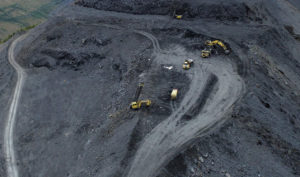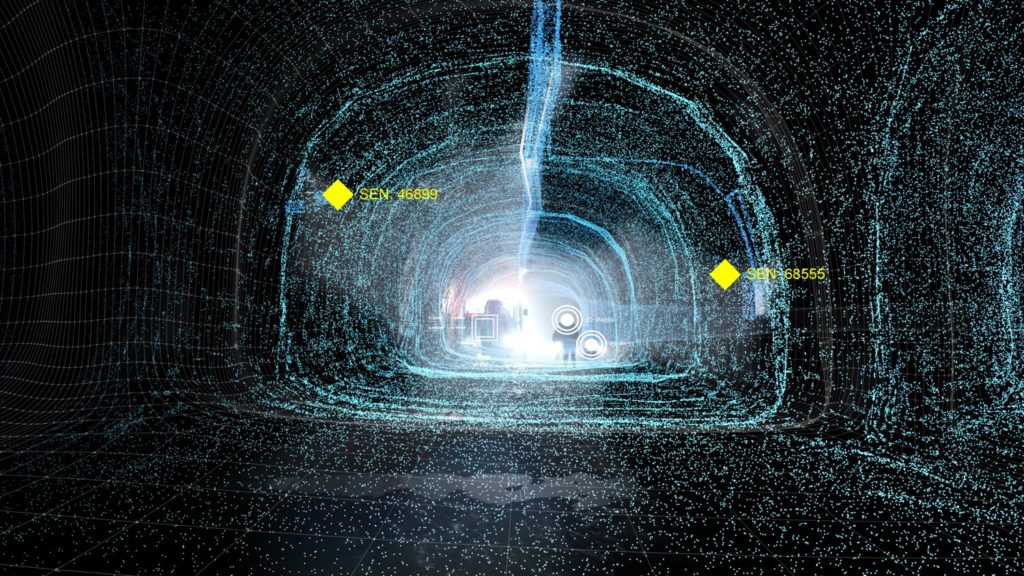Ericsson recently launched its latest Private 5G solution which offers secure and simple 4G LTE and 5G Standalone connectivity to mining and other industries. IM Editorial Director Paul Moore spoke to Filip Mestanov – Industry and Ecosystem Manager, Mining and Jeff Travers, Dedicated Networks Sales Manager, about Ericsson’s breadth of experience in mining and why mining companies are switching to 4G/5G in greater numbers

Filip Mestanov, Ericsson Industry and Ecosystem Manager, Mining
Q Why is LTE use in mining accelerating?
FM: There are sometimes different drivers for LTE network adoption in surface open pit and underground mines but overall, of course LTE and 5G provide greater reliability of communications – often they have use cases where they have tried to implement technologies using other wireless networks which work fine on a small scale but when they have tried to scale up, such as with a larger number of autonomous machines, for example, there have been pitfalls so there is a realisation that these other networks do not meet their reliability or availability requirements – it may be the original network was not built to meet these new demands or that there are technical issues during handovers. Also LTE can cover a large area with only a relatively small number of nodes – even a factor of ten less nodes required to cover the same area which is a major TCO factor. LTE also provides a futureproofed platform on which you can build 5G going forward to be able to handle new technologies and scale for them as and when they are available through upgrades without having to swap out the network. Our solution can also handle use cases that other wireless technology cannot, particularly in relation to reliability of data. Finally unlike other wireless technologies developed by one party, often proprietary, which might only address one particular use case, whereas our technologies from the beginning come built with the notion that there will be a variety of use cases and allows for some of those to be prioritised over others – for example critical comms over voice calling.
Q Is the rollout of autonomous fleets a big part of this?
FM: Yes, it is becoming a more mature market with a lot of mines now using or trialling autonomous trucks. With autonomy, especially underground where elements of loading and dumping are still manual with the tramming autonomous, there are still high resolution cameras sending a lot of video footage back to the monitor or operator – here LTE has a much greater ability to handle this real time video than other wireless technologies. And arguably the ROI in implementing LTE whether on surface or underground is quick through the productivity benefits of the autonomy it is enabling where it is applied.
Q LTE in mining tends to be a collaboration approach between the LTE technology provider, a local telecoms group, an integrator and the mine itself – how do these projects come together?
FM: The telecom operators definitely play a big role to start with as they are normally the ones selling a solution direct to the mining companies and of course they are the ones with the spectrum assets in the country concerned. We usually sell our technology to the telecoms operator who then engage with the mining customer as they are the established entity in that country or region. They often have their own value add offering such as surveillance options. You also mention the systems integrator – they also play a crucial role – whether it is a new SI, a mining company SI or an SI already working with the mining operator. Examples with a lot of mining LTE project experience include Ambra Solutions based in Canada and Challenge Networks in Australia to name just two. There may be a use case specific partnership – if you are implementing a drone inspection project underground, you will usually have a specialised company that builds the drone equipment and deploy infrared or other mapping technology on it. We may also partner with one of the mining equipment OEMs or contract miners. But the general answer is yes, there are usually several partners involved. The telecoms company normally leads the deals, and then you have the SIs plus the network technology provider such as ourselves. Ericsson has an all-inclusive approach to partnership, so we partner with all kinds of companies around the world.
Q Often LTE seems to start with a trial network in one part of the mine – is this the norm?
FM: Yes – it is common to have a commercial trial prior to a full blown deployment which is mainly the customer looking to justify the investment cost by testing the technology and making sure it will be able to meet the requirements whether that be autonomous mining trucks, remote control drills or something else. We still carry out a lot of proof of concepts and commercial trials. However, today things have moved on from 2016/2017 in that major mining companies like BHP and Rio Tinto are already using LTE widely so in a sense it is easier for smaller and mid-tier miners to trust the technology today and make the choice to go straight to a full mine system. And increasingly a mining company may have LTE deployed at a mine in one country where they have seen the value and then want to replicate that setup elsewhere without requiring a trial. Another point is that in many cases there is a particular area of a mine that they want to trial a new technology use case in – such as a section of the pit where they are testing autonomous trucks – so will opt to start with LTE deployment there, which effectively acts as a trial.
Q If you were to try and summarise from a technical point of view why today’s mining industry needs LTE/5G, would you say low latency would be at the top of the list?
JT: When you implement autonomy, you also need the ability to fall back on remote control which brings a latency requirement which did not exist before. This is the type of thing being tested in experimental subset areas that Filip mentions. The main drivers are latency but also uplink throughput.
FM: Definitely uplink throughput is a major point. When you start scaling up the number of vehicles you are operating remotely, then you start needing a lot more cameras and the throughput that comes with live feed in particular. Then its low latency but also predictable and stable latency since if you are operating a machine remotely with lagging there can be issues of nausea – you want to be able to operate it in the same manner as if you were sitting in the machine. This is typically somewhere between 50 and 100 milliseconds.
JT: We’ve been testing this extensively with Epiroc for underground activities. Generally, below 75 milliseconds the operational control is still perfectly smooth. But above 100 it becomes difficult for the operator.

Jeff Travers, Ericsson Dedicated Networks Sales Manager
Q What about greenfield versus brownfield LTE deployment? Is it only worth doing in a new mine? Are existing mines are better to keep the network setup they have?
FM: It depends on the situation – an existing network may be working but they may be facing some issues – it is not working as well as it could be. There might be interruptions which are affecting operators negatively. Our comms solutions provides a backbone for you to be able to run new technologies smoothly without interruptions, video freezing etc.
JT: You can break use cases into three categories – one layer being what mines are already doing today – you might have sensors all over the mine and some light automation where vehicles are just sending out their position. These don’t have a heavy network impact. Then you have full automation with heavy uplink live cameras & low latency requirement for RC input during mucking for example. Then you also now have connected or digital workers – where they are tagged, workers interacting with technology, such as remote maintenance assistance tools required streamed video, and technology being aware of workers. The types of systems that first responders such as police forces and fire services currently use. These need a very robust comms network.
FM: Another point is that if you compare 4G/5G in terms of downtime – it is much improved over other wireless network technologies. Mines all need the geographical redundancy that it provides in terms of reliability – it will never be the cause of stopped production for example. The decision in terms of a brownfield mine to invest in LTE will depend on the efficiency of the network and the extraction you already have. Also if a mine has gaps in network coverage today, this can still make the investment cost in LTE justifiable. And often it is on top of the existing network infrastructure to make new technology use cases possible – often things like voice calls will still use the current comms setup.
JT: There is a discrete moment when remote control operation is just fundamentally unworkable , let’s say at above 100 milliseconds, and that will be the case with many of today’s networks. So if you are going to implement automation in a big way then you face a comms turning point and need to design for this.
Q Can you give some examples of how Ericsson works with the major autonomous mining equipment OEMs? How actively do they get involved in furthering comms solutions with customers wanting to apply automation?
FM: Of course, the OEMs are the major equipment suppliers working closely with these mines who need to have the confidence that whatever new technology and equipment is being introduced, that it will work effectively over our systems.
JT: And it can be more than drilling or loading equipment. A good example is the essential role played by technology from the likes of ABB in ventilation (which is a key economic parameter for an underground mine of course), and these systems are also being supported by Ericsson LTE networks. Other partners include companies supplying positioning or digital modelling solutions for mines. For all mine equipment manufacturers we want to enable their technologies so that they know the network is going to perform with their next generation solutions.

Q Can you comment on any running mining projects that are using Ericsson LTE networks?
FM: Boliden Aitik in Sweden is a great example as they were looking for high levels of efficiency plus have a lot of plans for mine automation. Already today it is one of the most efficiently run copper mines worldwide. Telia has provided that solution to them based on 4G technology from us which can be upgraded to 5G over time. And we are working with them on new things – their blasthole drilling as an example is already quite autonomous already but the explosives charging is not – and this is something they are working on. We have also had success with several major mining clients in Russia – Polymetal’s Nezhda open pit gold mine in Yakutia, Uralkali’s BKPRU-2 underground potash mine and EVRAZ’s Sheregeshskaya underground iron ore mine are three sites where Ericsson LTE technology has been deployed by leading Russian telecoms operator MTS. These are major mines looking above all to maximise operational performance. MTS has a very good existing commercial relationship with these miners so that helps. The mines also have a very good vision of what they what to achieve and what equipment they want to take autonomous, and in which part of the mine.

Q What differentiates the Ericsson LTE solution versus others on the market?
FM: First of all we are a 140 year old company which carries some weight by itself! Other groups have evolved LTE capabilities through acquisitions but we are still the same Ericsson. From a technology and commercial perspective, we have won more than half of the current 5G contracts around the world, not just in mining but across all major industries including many critical service providers. Our good relationships with numerous telecommunication service providers worldwide removes any issues with spectrum or regulation for customers.
JT: The system and extreme network performance is due to many parts of our technology but to take an example our radio scheduler network capabilities have been built up over years in-house, to ensure maximum network performance under load, something WiFi struggles with. When you step up into full heavy equipment automation you need the throughput and latency that comes with that. And it will just become more so as you have more digitally enabled workers coexisting with autonomous equipment. While the numbers of miners working in the active minesite may continue to fall as they move to offsite control centres, those that remain will need all the digital tools at their disposal.











